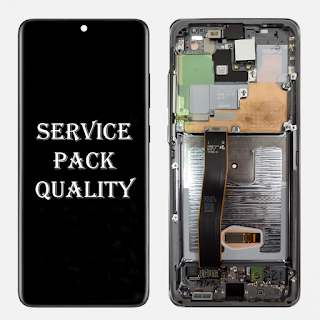What Components Are Used In Samsung Tablets?
Samsung tab parts or components can be broadly categorized into five categories: hardware, display, battery, camera, and storage. Let’s take a closer look at each of these categories.
Hardware components:
1.
Processor: The processor is the heart of the
tablet and is responsible for executing the instructions for the software. Samsung
Tab Parts use either Qualcomm Snapdragon or Exynos processors,
depending on the model. Qualcomm Snapdragon processors are widely used in
high-performance tablets, while Exynos processors are used in more
budget-friendly options.
2.
RAM: Random Access Memory (RAM) is a type of
memory that is used to store data temporarily while a tablet is running an
application. The amount of RAM in Samsung tablets ranges from 2GB to 6GB, with
more RAM meaning better performance.
3.
GPU: Graphics Processing Units (GPUs) are
responsible for rendering graphics for applications and games. Samsung tablets
use either Adreno or Mali GPUs, which are well known for their fast performance
and efficient power usage.
4.
Wireless: Wireless components in Samsung
tablets include Wi-Fi and Bluetooth. Wi-Fi allows the tablet to connect to the
internet and access the web, while Bluetooth allows the tablet to connect to
other Bluetooth-enabled devices, such as wireless headphones or keyboards.
5. Sensors: Sensors are used to detect movement and orientation. Common sensors found in Samsung tablets include accelerometers, which detect acceleration and can be used to control games, and gyroscopes, which detect rotational movement. Proximity sensors are used to detect when a user’s face is close to the screen and can be used to turn off the screen during phone calls.
Display components:
1.
Screen size: Samsung tablet screen sizes range from
7 inches to 12.4 inches, allowing users to choose a tablet that fits their
needs and preferences.
2.
Screen type: Samsung tablets can feature either
TFT LCD or AMOLED displays. TFT LCD displays are cost-effective and offer good
color reproduction, while AMOLED displays offer better color saturation and
contrast, but are more expensive.
3.
Resolution: The resolution of a tablet’s screen
refers to the number of pixels that make up the display. Higher resolutions
offer sharper and more detailed images, but also consume more power. The
resolution of Samsung tablet screens ranges from 1280x800 to 2800x1752 pixels,
depending on the model.
Battery components:
1.
Capacity: The battery capacity of a tablet
refers to the amount of energy it can store. The battery capacity of Samsung
tablets ranges from 5000mAh to 10090mAh, with larger capacities offering longer
battery life.
2. Charging: Samsung tablets can be charged using either USB-C or POGO charging ports. USB-C is a newer, faster charging standard that is becoming more common, while POGO ports are specific to Samsung devices and offer a convenient charging solution.
Camera components
1.
Rear camera: The rear camera of a tablet is used
to take photos and record video. Most Samsung tablets are equipped with a rear
camera with a resolution ranging from 8MP to 13MP, allowing users to take
high-quality photos and videos.
2.
Front camera: The front camera of a tablet is used
for taking selfies or making video calls. Front cameras in Samsung tablets have
a resolution ranging from 2MP to 8MP.



Comments
Post a Comment